It’s the end of an era! The building that once graced the corner of High Street and Synehurst Crescent is no more. However you remember it – whether as the old school/the Scout Hut/the Royal British Legion or The Pub in a Club – it has strong memories for many people. Brian Smith, the Aldington poet, has written fondly of the building. The Dallimore brothers have made a brief video of its reduction to rubble over the course of 18 days.
What follows is a history of the building from its beginnings to its ultimate demise.
* * * * *
The National School
The building began life as a school. In the mid-19th century, school-building was proceeding at a fast pace all over the country, taking advantage of the School Sites Act of 1841 in order to acquire land for such purposes. In neighbouring Offenham, a National School was being erected, and at Bretforton a school opened in 1847. In Badsey there was recognition that a school was required. A piece of land (80 feet x 42 feet) was given in the 1840s by Richard Ashwin of Aldington Manor, but no further progress was made. The land in question was then in Aldington but in 1920 was transferred to Badsey.
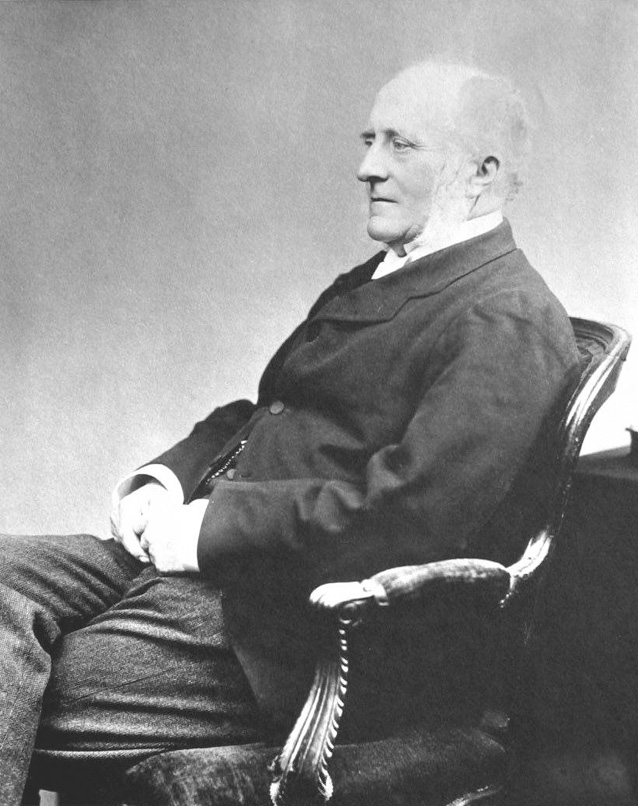
It was not until 25-year-old Reverend Thomas Henry Hunt arrived as Vicar of Badsey in 1852 that things began to happen. With reforming zeal, he soon set about amending the years of neglect caused by absentee vicars. One of his main areas of concern was the poor educational facilities and he felt strongly that a National School should be established. He set out his concerns in a letter to Dr John Bull, Canon of Christ Church. (The Dean and Chapter of Christ Church, Oxford, had, since 1546, been the patrons of the parishes of Badsey, Aldington and Wickhamford.) He found “a crying necessity” for a National School in parishes with a population of 650, and no educational facility except a Sunday School. A positive response was received so Reverend Hunt was able to proceed with his plans for the establishment of a school in Badsey, and quickly set about commissioning some plans.
A local Evesham builder, George Hunt (not a relative), was commissioned to draw up plans. “He begs me to send you up a side elevation, and thinks that you will not deem this too ornate,” wrote Reverend Hunt to his patron in May 1853. “And he would wish to know what alterations you would require; a great many new schools have risen up about here, and they are all somewhat similar to the one sent for your inspection.” These plans did not come to fruition, however, as the state was beginning to take more control of education. They had an album of designs which established the model Victorian church school. “The styles of the Middle Ages are best suited for school houses … because the buildings themselves partake … of a semi-religious character.” Playgrounds and “galleries” (rows of seats) on the Scottish model became popular.
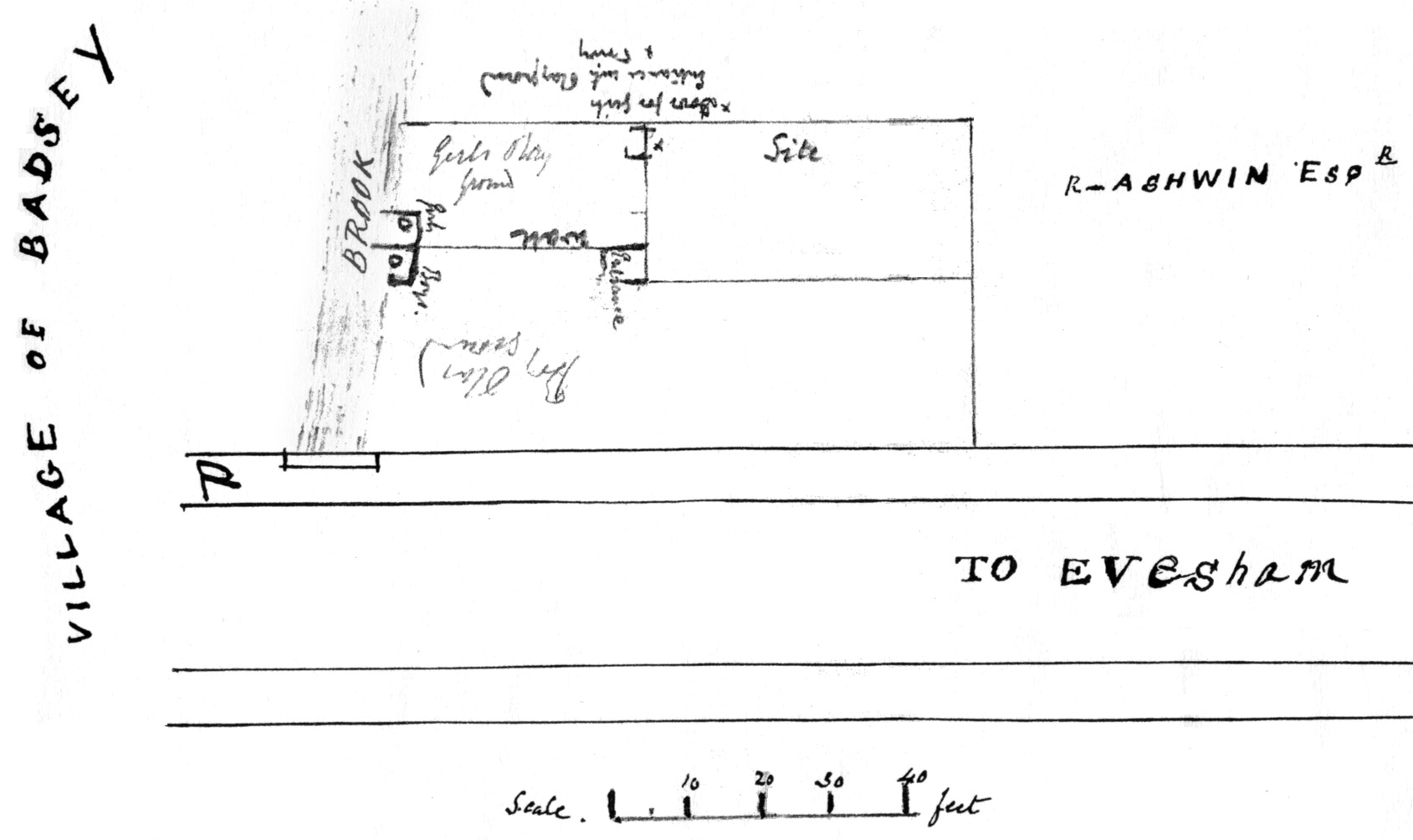
A E Perkins of Worcester, was appointed architect and William Shelswell the builder. In accordance with the specifications of the time, Perkins’ design had just one room, 37 feet long by 17 feet wide, to house 78 children, with a separate entrance for boys and girls and separate playgrounds; the toilets and coal store were at the rear. The walls were to be of brick, with stone dressing, and roof of timber and slate. A teacher’s residence was not part of the plan. The general standards laid down by the Committee of Council stated that six square feet of floor space must be allowed per child and the school room had to be no less than nine (later ten) feet high, with provision for adequate ventilation.
The money for the building the school came from two main sources: public subscription and the government. In addition, smaller grants were received from the Diocesan Board and The National Society. As soon as Reverend Hunt had received the go-ahead for the project, an appeal was made to parishioners for subscriptions. The final costs for building the school were as follows:
Payments Money received
School site - (donation) Local funds £194 18s 10d
Building £225 19s 6d Committee of Council £125 16s 0d
Rejected plans £10 Diocesan Board £20
Fittings and sundries, fencing, etc £88 5s 6d National Society £20
Legal expenses £16 9s 10d
Architect’s commission £20
TOTAL £360 14s 10d TOTAL £360 14s 10d
To obtain a grant from The National Society, a school had to be “in union” with the Society, and must comply with the building specifications laid down by the Committee of Council. On 8th March 1854, Reverend Hunt signed the formal document uniting the Badsey school with The National Society for Promoting the Education of the Poor in the Principles of the Established Church throughout England and Wales. 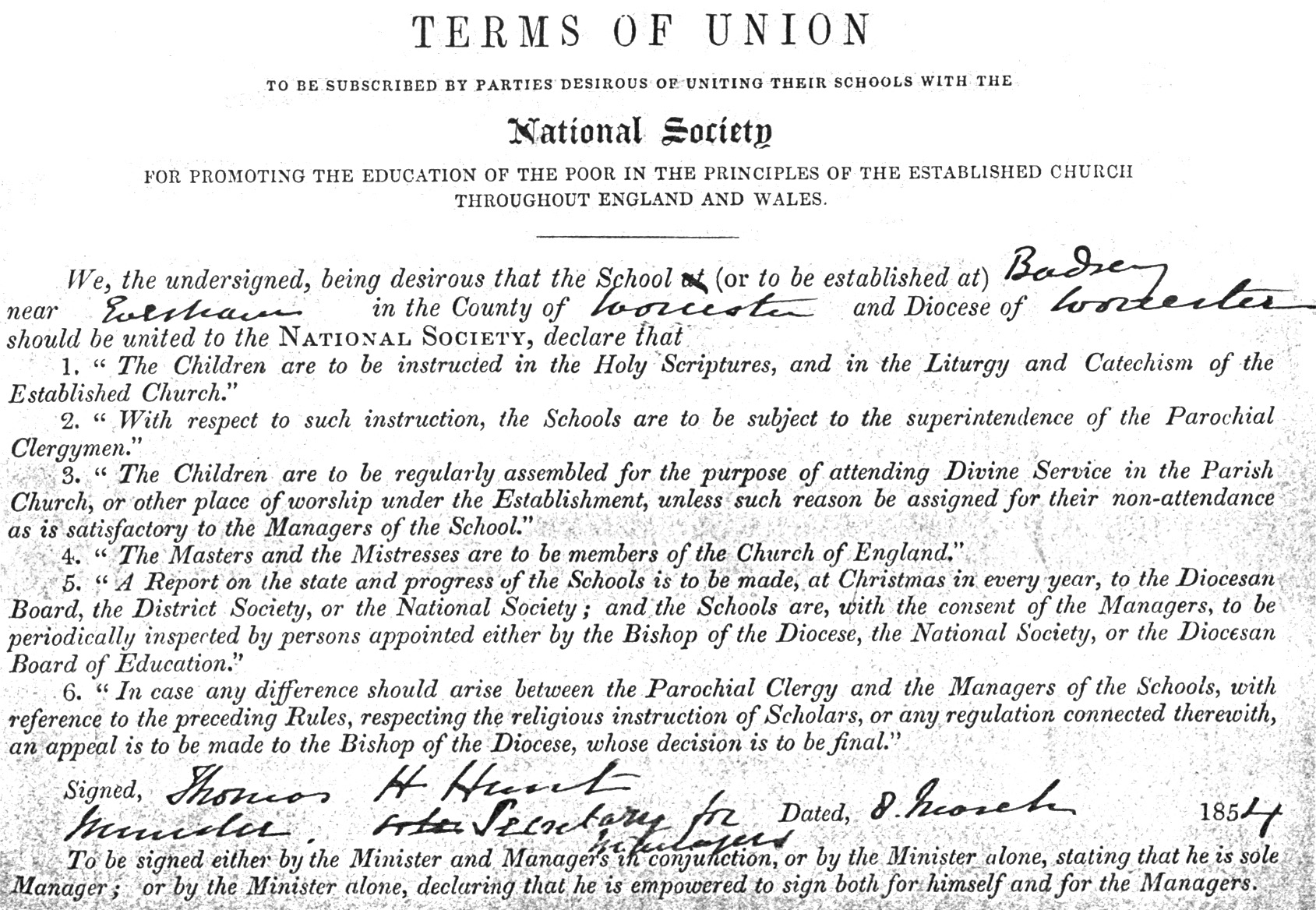 One month later, a Trust Deed was signed in which it specified that the Trustees were to be the Minister and Churchwardens of Wickhamford and their successors. The reason why the Churchwardens of Wickhamford were specifically mentioned, and not Badsey, is not known. Perhaps it was deemed important to mention Wickhamford specifically, because the Vicar held the two benefices in plurality but was resident at Badsey. Certainly, the terms of the Trust Deed were to cause much confusion nearly 100 years later when the old school building was being sold, as it was initially assumed that it referred to a school at Wickhamford.
One month later, a Trust Deed was signed in which it specified that the Trustees were to be the Minister and Churchwardens of Wickhamford and their successors. The reason why the Churchwardens of Wickhamford were specifically mentioned, and not Badsey, is not known. Perhaps it was deemed important to mention Wickhamford specifically, because the Vicar held the two benefices in plurality but was resident at Badsey. Certainly, the terms of the Trust Deed were to cause much confusion nearly 100 years later when the old school building was being sold, as it was initially assumed that it referred to a school at Wickhamford.
The foundation stone was laid on 1st August 1854, and The United Badsey, Aldington and Wickhamford National School opened its doors to pupils on 1st November 1854. The first Mistress of the school was Miss Sarah Bradley. In 1855, Billings’ Directory, described the school as “a neat building of recent creation … average number of scholars 45 …”.
Forster’s Education Act of 1870 required that all schools be surveyed. It was reckoned that school accommodation was required for 125 children (81 children from Badsey, 24 from Aldington and 20 from Wickhamford). The school had been built to accommodate 78 children, so provision for an extra 47 was required. A grant was awarded in January 1873 and work commenced shortly after. An extra room was added at the rear to accommodate the Infant children. The building work cost £193, of which £25 was given by Christ Church. By 26th October 1873, the new classroom was complete and ready for use.
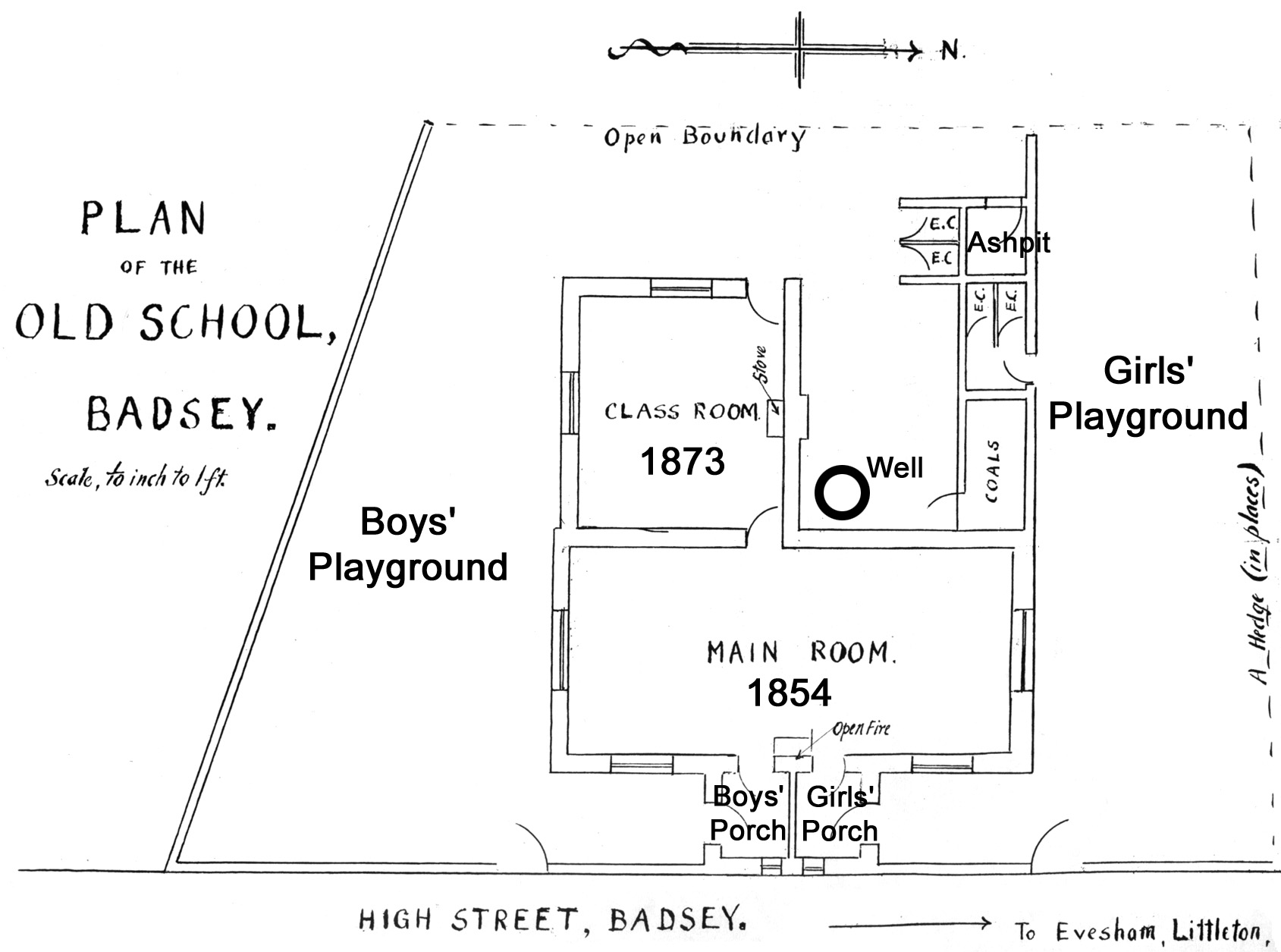
In the 1870s, the school began experiencing financial difficulties. A School Board was formed in 1890 and control of the school passed from the church to the Board. A census of the children in the district was taken, revealing a total of 222 children. The Education Department, having reviewed the plans of the old school that had been sent, felt that the accommodation was quite inadequate, and could only properly be recognised for the Infant School, and then only on the conditions that considerable alterations were made. They felt that, under the circumstances, the Board would be advised to proceed at once with the erection of a new school for 250 scholars of all ages. The Board asked the Education Department for permission to build a new school for some of the children adjacent to the present building, connected by a corridor or passage, but this was refused.
The Board thus had little choice. After considerable discussion, it was agreed to build a new school and to find a convenient site as soon as possible. Land was acquired and the new school was officially opened on Friday 21st June 1895. The children marched in procession from the old school to the new for the ceremony.
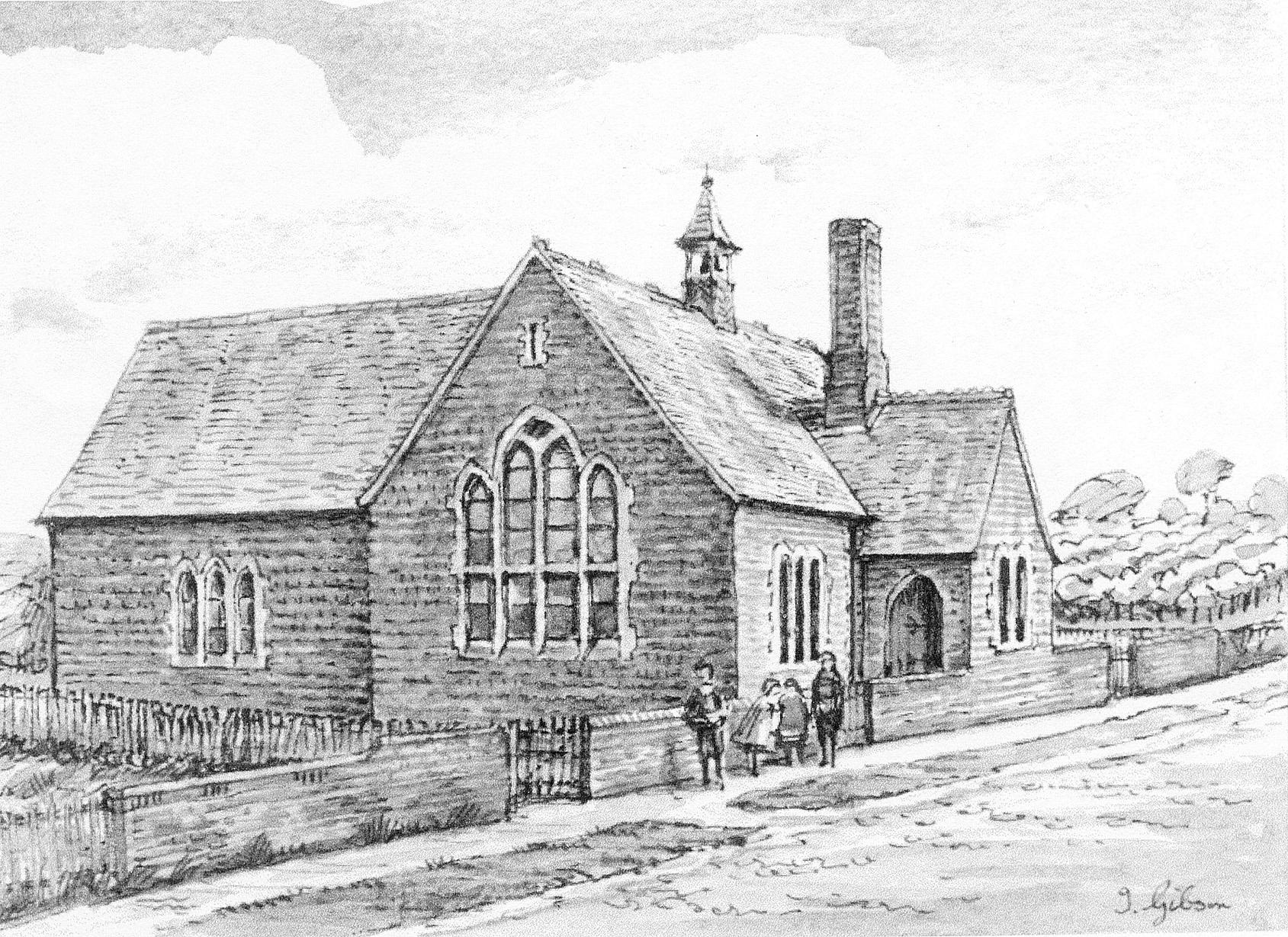
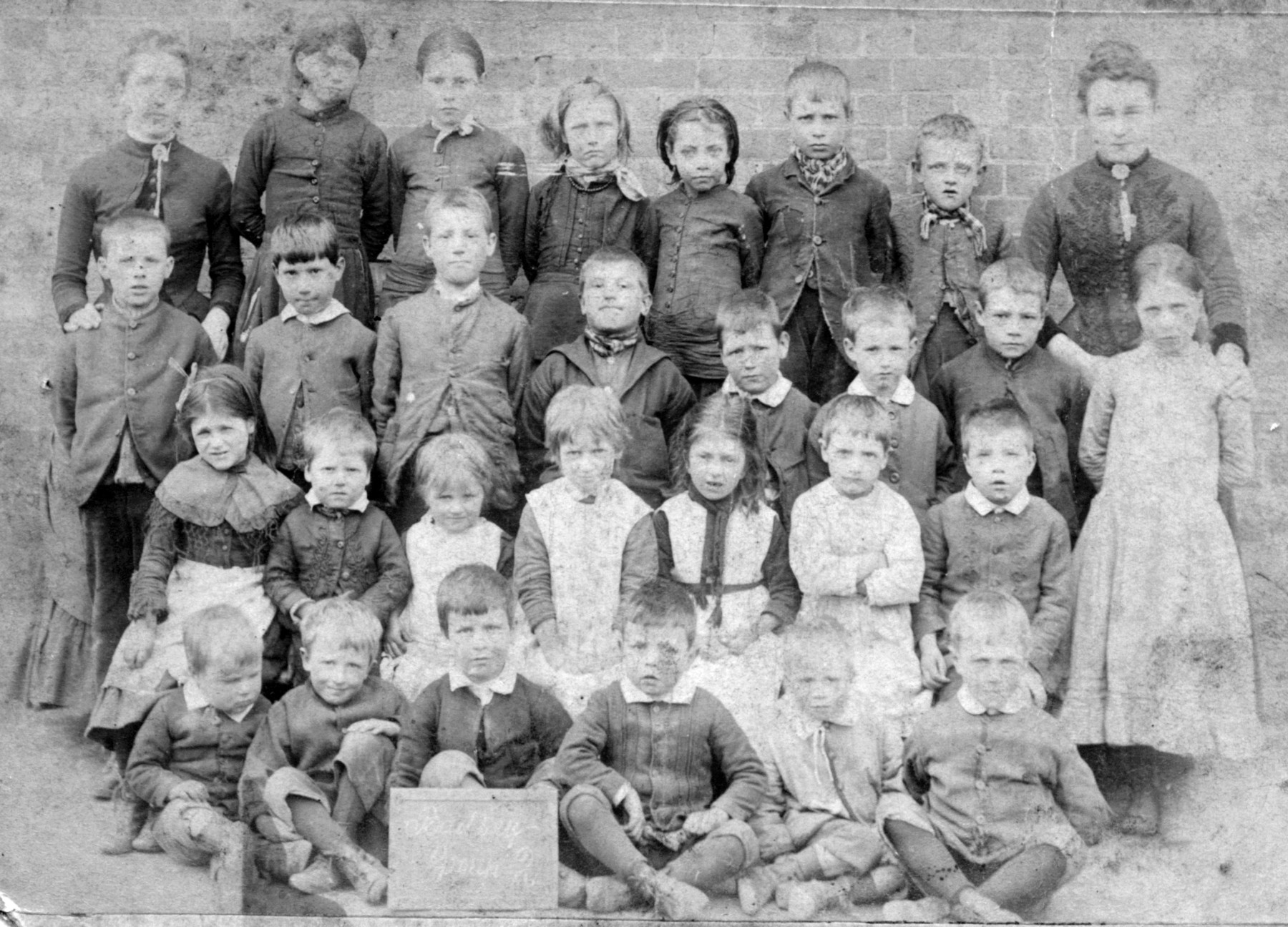
Community Centre, 1895-1946
After the school had moved to new premises, the building was used as a community centre for the next half century. Dances, concerts, whist drives, parties, wedding receptions and public meetings were held there, and processions through the village began there.
Concerts in particular were a great part of village life, and nearly always the school children had a part to play. The Parish Magazine for February 1899 reports: “Two excellent entertainments were given by the children of our schools on 25th and 26th January. Mr and Miss McDonald are to be congratulated on the success of their labours in preparing the children.” A concert the following year again met with acclaim: “Two very popular items on the programme were songs given by the school children, which evoked very great applause. They had been very carefully trained by Mr & Miss McDonald, and reflected the greatest credit upon their teachers.”
According to Evelyn Day (née Crane), writing about a time between the two world wars, Miss Bird, who taught Standard 3, was the organiser, together with the help of Mrs Arthur Sears. Evelyn’s best friend, Evelyn McKanan-Jones (née Barnard), wrote in A Childhood in Badsey:
No village hall had then been built
Parties held, were in the Old School
Many's the concert and dance were held there
Fun and jollity, was the rule
By 1906, according to a report in the Parish Magazine, “for some years past the state of the floor in the big room has been indescribably bad”. The trustees (ie the Vicar and Churchwardens), in their corporate capacity, were on the verge of insolvency, so could not afford to employ a builder to put down a new floor. The new Vicar, the Reverend W C Allsebrook, was anxious to see the floor renewed and offered to advance money for materials if voluntary workers would undertake to lay the floor. The response was spontaneous and prompt, and the room was once again provided with a decent floor. But the upkeep of the building was always a problem. In the nationwide Valuation Survey which took place towards the beginning of the 20th century, the old school was inspected on 31st October 1913. It was described as “Brick and tile schools, poor repair: 2 classrooms and porch, brick wall in front.”
Another initiative of Reverend Allsebrook in 1906 was the publication of picture postcards of the village, which were produced by W & H Smith and sold at a penny each. One of the postcards was of the old school.
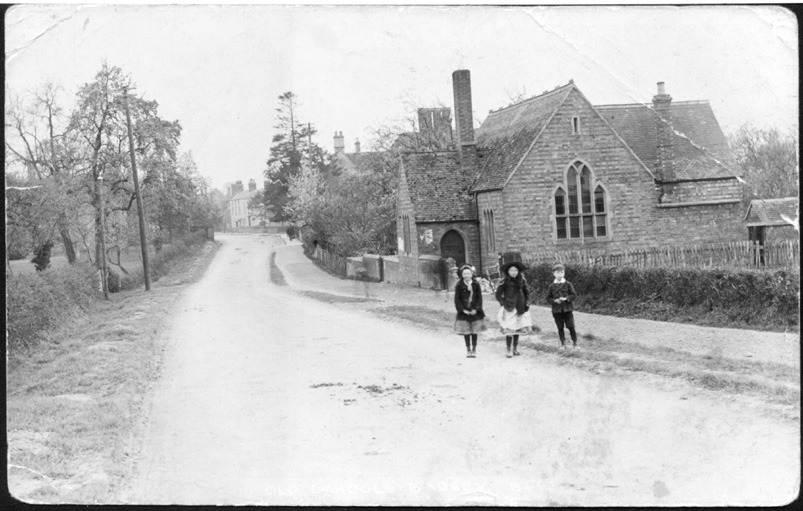
Badsey Women’s Institute, founded 1927, held their meetings at the old school. According to an article written on the occasion of the WI’s 75th anniversary, washing up after refreshments was done in a chipped enamel bowl on an old wooden table, using soda as the washing agent. The crockery was drained on a tin tray, the water having been drawn from a cold water tap on the wall and boiled on an old iron gas stove.
During two world wars, the building was brought into active service. A Volunteer Training Corps, which was formed in Badsey at the start of the First World War, was drilled once a week at the old school. In 1918, when the nearby Manor House was used as a Prisoner of War camp for German soldiers, the men who guarded them were billeted at the Old School.
In September 1939, at the start of the Second World War, 71 children from Birmingham, together with their headmaster and staff, arrived at Evesham Station and were put on a bus and taken to the old school. From here they were allocated lodgings. Stanley Hayes, aged 12 at the time, wrote with his memories of that time:
I was a pupil at Handsworth New Road School. We assembled at the Community Hall and were allocated lodgings. There were only three left at the end, and I was allocated to Mr & Mrs Wasley who lived at Aldington. We arrived two days before war was declared. On the Sunday morning, we assembled at what is now the British Legion and were taken to church. We were in church when war was declared and the Vicar made an announcement.
In June 1940, soldiers who had been evacuated from Dunkirk arrived in Badsey. The old school building was used as a canteen and local people rallied round and found food for the soldiers.
The late Mike Hewlett (1927-2010) said that his father, Ivor, leased the strip of land on the south side of Synehurst Crescent by the tributary from Badsey Brook. There was a stone building at the back of the old school where he built a pig-sty. At one time there was also a brick shed which used to be the Council Depot (until it moved to Blackminster).
Mike also recalled that, until the 1960s, a brick bridge known as the Old School Bridge (backing on to the old school) existed on the west side of the High Street near the entrance to the present-day Manorside; it had no arch and was made of massive Cotswold stone about 500 cwt each. It was open and was a gathering place during the war years for the youth of the village to sit and talk and smoke. This was filled in when Manor Close was built and the water piped underground.
Scout Hut, 1946-1962
In 1946, the 5th Evesham (1st Badsey) Boy Scouts was formed. They needed a meeting-place and took on a five-year lease of the old school; the building was then used exclusively as a Scout Hut. It was in a poor state of repair, so the Scouts set about raising £200 to install a new water system, WC and electric lighting.
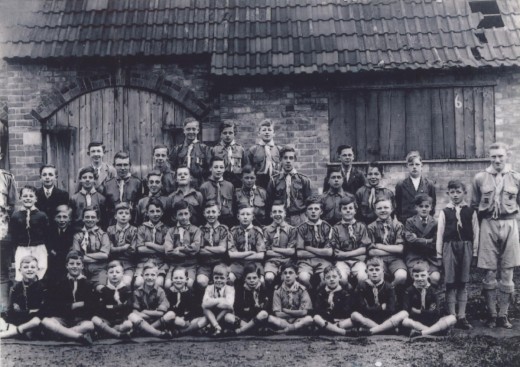
Nearly a hundred years after the building of the National School, the building was still owned by the church, with the Vicar of Badsey, Aldington and Wickhamford, and the churchwardens, acting as trustees. Correspondence held in the Diocesan Education Committee’s file on disused schools between the Reverend W B Chapman of Badsey Vicarage and Canon Rees Jones of the Diocesan Committee in 1950 reveals that several enquiries were made to the diocese concerning the sale of the old school. Besides the Scouts, the Badsey British Legion also made representation.
At Reverend Chapman’s request, a meeting was arranged in Worcester in order to meet a representative of the Scouts. This meeting duly took place on 8th March 1950. Those present were Reverend Chapman, Canon Rees Jones, Bernard Blake (Scoutmaster) and Harry Stewart (President), the subject being, “Possible purchase of the old disused school at Badsey for use by the Scouts”. During the discussion it was reported:
- That a Parliamentary Grant of £160-£180 had been given.
- That the building became disused about 1902?
- In 1924 the British Legion wanted to rent or buy the building.
- Copy of the Trust Deed might be found at Messrs New & Saunders, Solicitors, Evesham, in the papers of Mr Lees Milne, late Churchwarden of Wickhamford.
- The building was used for many purposes during the war – by the WVS as a canteen; as a Warden’s Post.
- In 1946, the former incumbent, Mr Jeffries, leased the building to the Scouts for 5 years with option of renewal.
- The Scouts paid a sum of c £200 for repairs to the building, new water system, WC and electric lighting.
- It was felt that in view of the amount of work carried out by the Scouts on the building, if the school was sold, the Scouts should have the first opportunity to purchase.
- It was thought Mr M W Jones’ valuation of £550 was much too high, and there was little likelihood of anything like that amount being offered for the building. This also applied to the British Legion who were known to be interested in the building.
- The Scouts might be able to make an offer of £350. It should be pointed out to the Ministry of Education that the difference of £200 between that amount and the valuation of £550 should be considered as having been covered by the cost of the improvements.
- The Trustees of the building are the Vicar and Churchwardens of Wickhamford – but at the present time, the Vicar is the sole Trustee since no Churchwardens are in office.
- If the Scouts purchased the building, a clause would be included in the conveyance to the effect that if at any time it ceased to be maintained as Scout HQ, it would revert to the Parochial Church Council.
The day after the meeting, the Scouts wrote to the Diocesan Committee with an offer of £350:
Further to our appointment and subsequent conversation with you yesterday, we beg to submit an offer of £350 for the purchase of the old Church of England schools at Badsey. We realised that the figure indicated by you was £200 above this, but we feel that the main assets including gas and sanitary arrangements and electricity, would not have been there to include in the surveyors’ estimate if we had not spent over £200 on vital repairs during the last four years. It was the knowledge of having to spend this money that caused us to have an agreement drawn up by the only officially constituted trustee (Rev J G Jeffreys) in 1946 and though, as you pointed out, this was not a legal action, it was with this agreement behind us that we decided to go ahead with these repairs. I trust, sir, that we may be given an opportunity to buy this property in order that we can continue with Scouting in the village. The Scouts, though an open troop, support the church to the full and hope to be able to continue to do so. If we lose our HQ, we see little hope of getting anywhere else which would probably mean the disintegration of the troop. We do not think the present state of the property will draw an offer above this when the costs of pending repairs is taken into consideration. We would wish to state that in the event of the Scouts disbanding at any time, the building would be handed over to the Parochial Church Council for Sunday School and social work in the village. Thanking you for your help.
The Consultative Committee met on 15th March to consider the sale. Reverend Chapman, who had already confirmed that he was in favour of the old school being sold to the Scouts, received the following letter from Canon Rees Jones:
Dear Chapman
I promised to let you know the verdict of the Consultative Committee. They agreed to recommend to the Diocesan Education Committee that the offer of £350 for the school premises be accepted, provided that the Diocesan Surveyor considers this a fair price. The Ministry of Education would, of course, have to give its sanction. And so, the first hurdle has been successfully taken.
An Order-in-Council was issued on 15th March 1951, vesting the old school, among other properties and endowments, in the Diocesan Board of Finance. The Ministry of Education approved the sale and matters were finally completed in October.
The annual Gang Show was a popular event. Brian Smith recalls that the 1951 show was a pantomime, "Cinderella". Brian, who had recently joined the Cubs, was roped in to be a dwarf. A report of the event appeared in The Evesham Standard of 2nd March 1951.
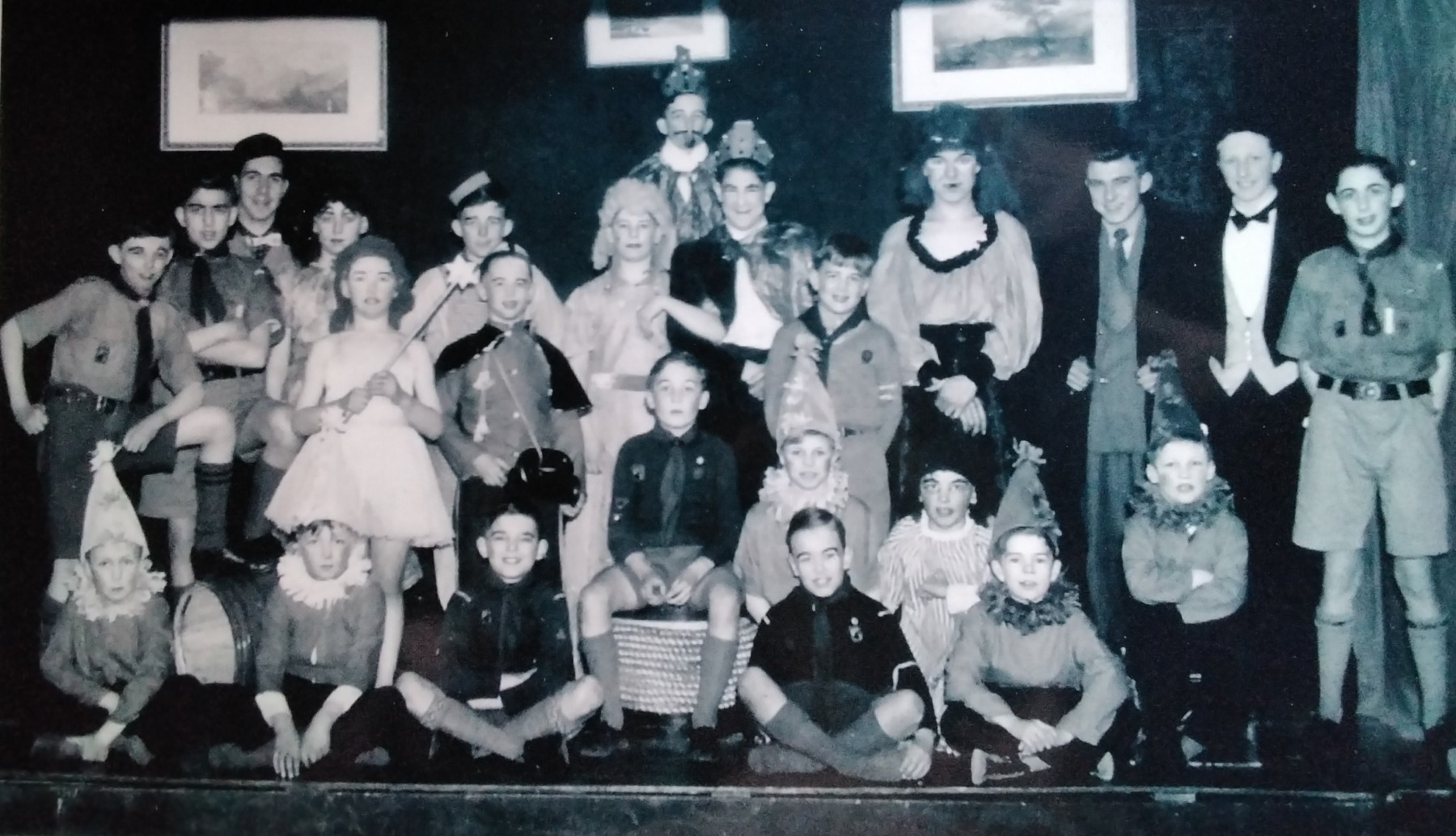
The Scouts continued to use the old school as a meeting-place for the next ten years until a new hut was built on the Recreation Ground.
The Royal British Legion, 1962-2014
Early in 1962, Harry Stewart, the owner of the building, made it known to his employee, Philip Sparrow, that he was willing to sell the old school. Philip Sparrow was a staunch member of the British Legion (which later became known as the Royal British Legion). The Badsey, Aldington and Wickhamford Branch of the British Legion had been founded in 1928. Branch meetings were then held at the several public houses in Badsey or Wickhamford, but members ideally wished to acquire their own premises. During the Second World War, £500 was raised and invested in National Savings Certificates. This was to start a fund for buying or building a branch headquarters as soon as the opportunity arose. Several venues were looked at, but found to be unsuitable.
In 1950, Philip Sparrow had tried to make an offer for the old school building on behalf of the Legion, but on that occasion was unsuccessful. Twelve years later, he was able to try again. A general meeting of the Legion was held at The Bell Inn in February 1962, attended by 63 members. They resolved to purchase the building, which still looked much the same as when it ceased to be used as a school in 1895. A conveyance dated 20th July 1962 was made between G H Stewart and the British Legion:
Conveyance of the Old School, Badsey, in the county of Worcester upon trust for the Badsey, Aldington & Wickhamford Branch of the British Legion.
The work of renovation quickly began, much of it on a voluntary basis. The Badsey branch had a large and enthusiastic membership, whose members quite happily gave their time or donated items. Ninety-one-year-old Les Grinnell remembers those days fondly. He recalled that Johnny Vale did all the plastering, whilst others helped out on a “make do and mend” basis. Elgar Hartwell, who owned the nearby butcher’s shop, had some glazed slabs on which he used to cut the meat – he gave some of these to the Club for the gents’ urinals. The new Headquarters and Club was ready by July 1962 for its official opening by George Aldrich, the first branch chairman.
In subsequent years, when extensions were made, Sinclairs the builders were employed. Money for this was raised through many social and fund-raising events. An extension to the existing clubhouse was approved in 1981. In 1999, the go-ahead was given for the erection of a single-storey extension to form an entrance lobby and additional ladies’ toilets. By now, the building was no longer recognisable as the old school.
In 1973, extra land (622 square yards) had been acquired at the rear of the building. On 26th April 1973. Evesham Rural District Council sold to the Royal British Legion (as it was by then known):
Land at Synehurst Crescent, Badsey, in the County of Worcestershire, upon trust for the Badsey, Aldington & Wickhamford Branch of the Royal British Legion.
It was to be used as a parking area or for the erection of garages, and a low fence was to be built on the boundary.
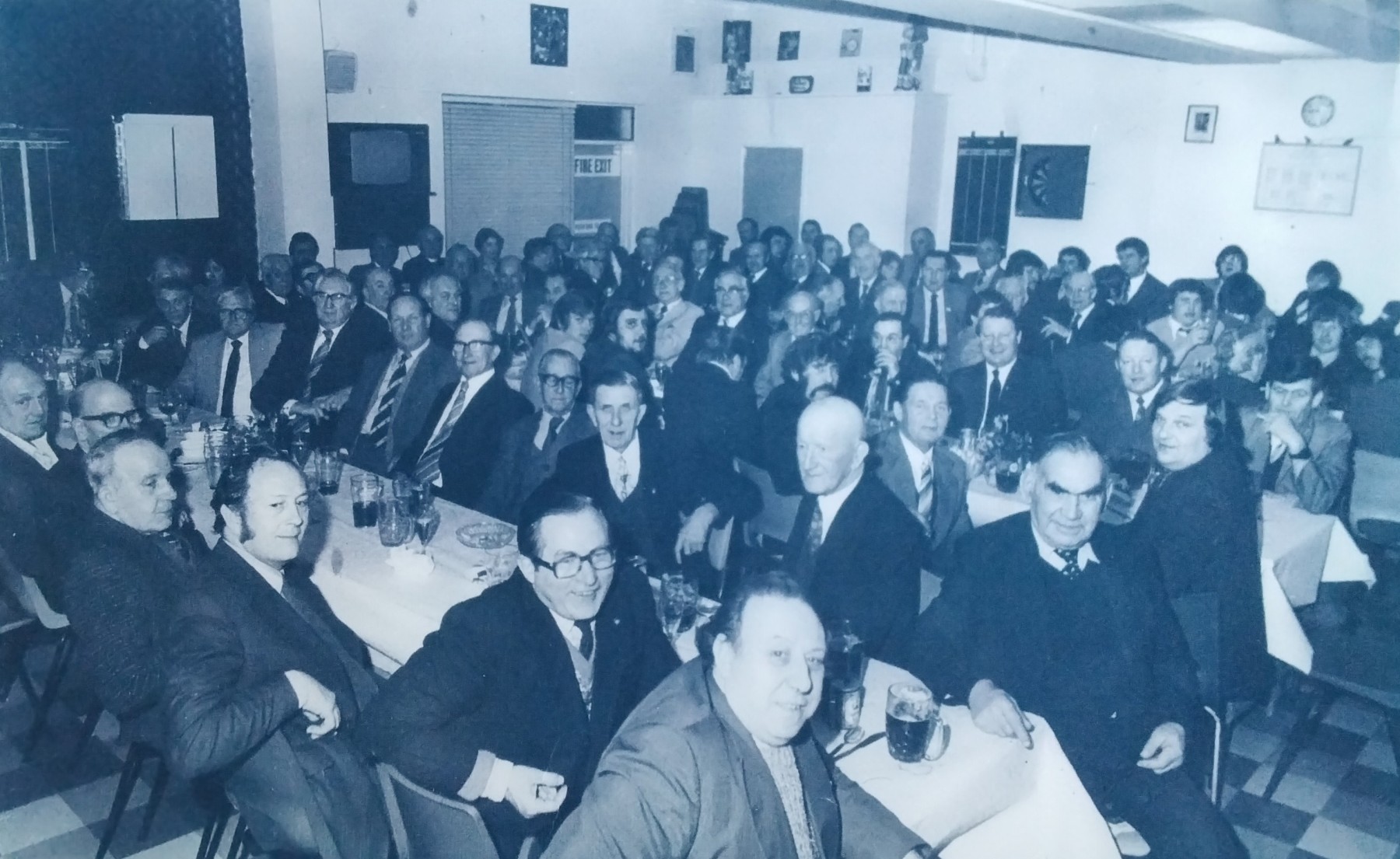
Due to dwindling numbers, caused by the death of so many of their staunchest members, the Badsey, Aldington & Wickhamford Branch of the Royal British Legion ceased to meet towards the end of 2014. The branch still exists, having around ten members, and is known as “a supported branch”. Les Grinnell, who is a life member of the Royal British Legion and was on the committee for many years, was responsible for organising the Poppy appeal and was the last official Chairman of the Club. He mourns the passing of the Club.
The Pub in a Club, 2015-2022
Early in 2015, the Royal British Legion building was leased to the private “Pub in a Club”. Even though the Badsey branch had raised the money for buying the building some 70 years earlier, it was Legion HQ in London that were the official owners. They had the deeds and collected the rent.
The Pub in a Club opened in February 2015 with Rob Welch at the helm. The opening of this new venture meant that the various activities for social groups, particularly the elderly (such as the Over 60s’ Friendship Club), could continue. The women’s branch of the Royal British Legion also continued to meet there. A number of social and fund-raising events were held in the Club. The photos below show the first event, a quiz night, held on 28th February 2015.
In 2016, Rob’s sister, Tracey Hemming, started Freedom Disco every Tuesday night at the Club. This was a disco for young people who had learning difficulties. It began in a small way, with a few donations, which enabled Tracey to purchase second-hand disco equipment. The young people, with their carers, were able to spend an enjoyable evening in a safe and secure environment. By 2017, they had enough money to purchase a minibus so that those who lived further away could attend the disco. In July of that year, Tracey opened the Freedom Day Centre at the Club, which included a community café.
In 2021, the Royal British Legion decided to put the building up for sale, so the Freedom Day Centre was forced to find a new venue, moving to South Littleton. The Pub in a Club continued until May 2022 and since then the premises have been vacant.
The Future
On 23rd February 2023, an application was received by Wychavon District Council to demolish the former Royal British Legion building and to erect nine two-bedroom apartments. Approval was granted on 11th October 2023 and demolition began a few weeks later. The site is now clear and awaiting a start by the developers.
Maureen Spinks, December 2023
Sources of Information
- Diocesan Education Committee – Files re Disused Schools, Worcestershire Record Office - BA 8953
- Articles on the British Newspaper Archive from The Evesham Journal and Evesham Standard
- 1962 Conveyance
- The Pub in a Club Facebook page
- Freedom Day Centre
Acknowledgements
- Les Grinnell – for information about the Royal British Legion’s ownership
- Will & John Dallimore – for their film of the building’s demolition and providing a copy of a Scout photo
- Brian Smith for his poem and providing a copy of a Scout photo
- Chris Helm - for information about the Royal British Legion and providing access to the Pub in a Club/Freedom Day Centre signboard
